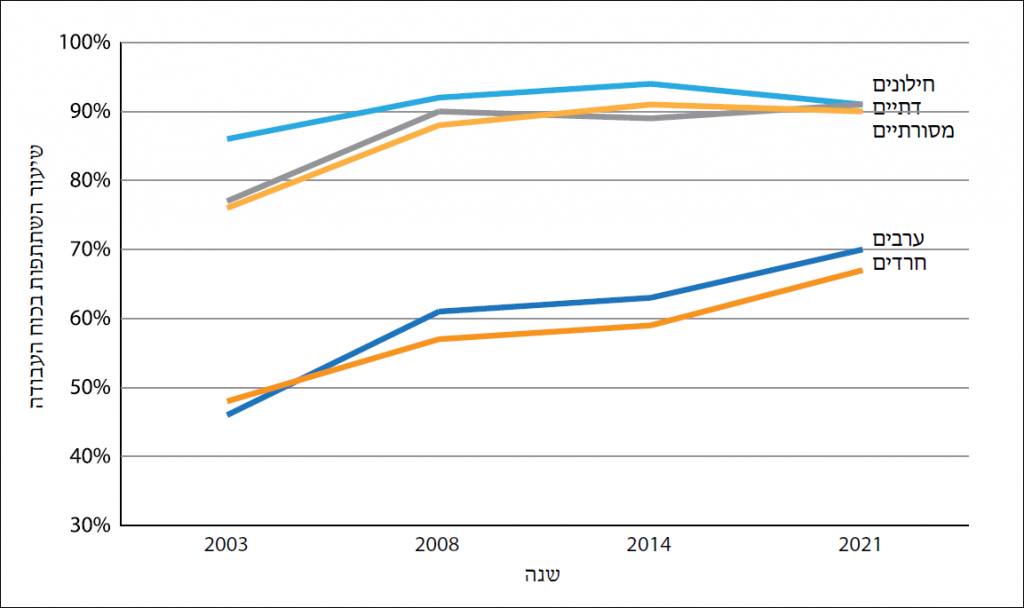Abstract: Against the backdrop of the attempted judicial overhaul, tensions between different sectors in Israeli society are intensifying. In this paper, we revisit the seminal work of Baruch Kimmerling, who announced the end of secular Zionist hegemony and the emergence of succession struggles. We analyze recent shifts in demographic, economic, and political power relations among the five main sectors of Israeli society: secular, traditional and national-religious Jews, ultra-Orthodox Jews, and Arabs. Despite its political weakening, the secular sector maintains its position of leadership in terms of economic power and military recruitment rates. Together, these factors grant it structural power and provide a means of resisting the judicial overhaul. Conversely, the political power of the national-religious sector is increasing, while the political representation of the Arab and ultra-Orthodox sectors remains substantially unchanged. This finding casts doubt on the approach that we label demographic determinism, which assumes that population growth translates directly into political power. Lastly, we propose that the struggle between the two forms of Israeli nationalism, secular-liberal and religious-particularistic, will be decided by the traditional sector, whose complex religious, ethnic, and class position places it in the middle between the two camps.

Figure 5: Labor force participation rates in Israel by ethnicity and religiosity, ages 30-49.
Read the full paper (in Hebrew) here.
